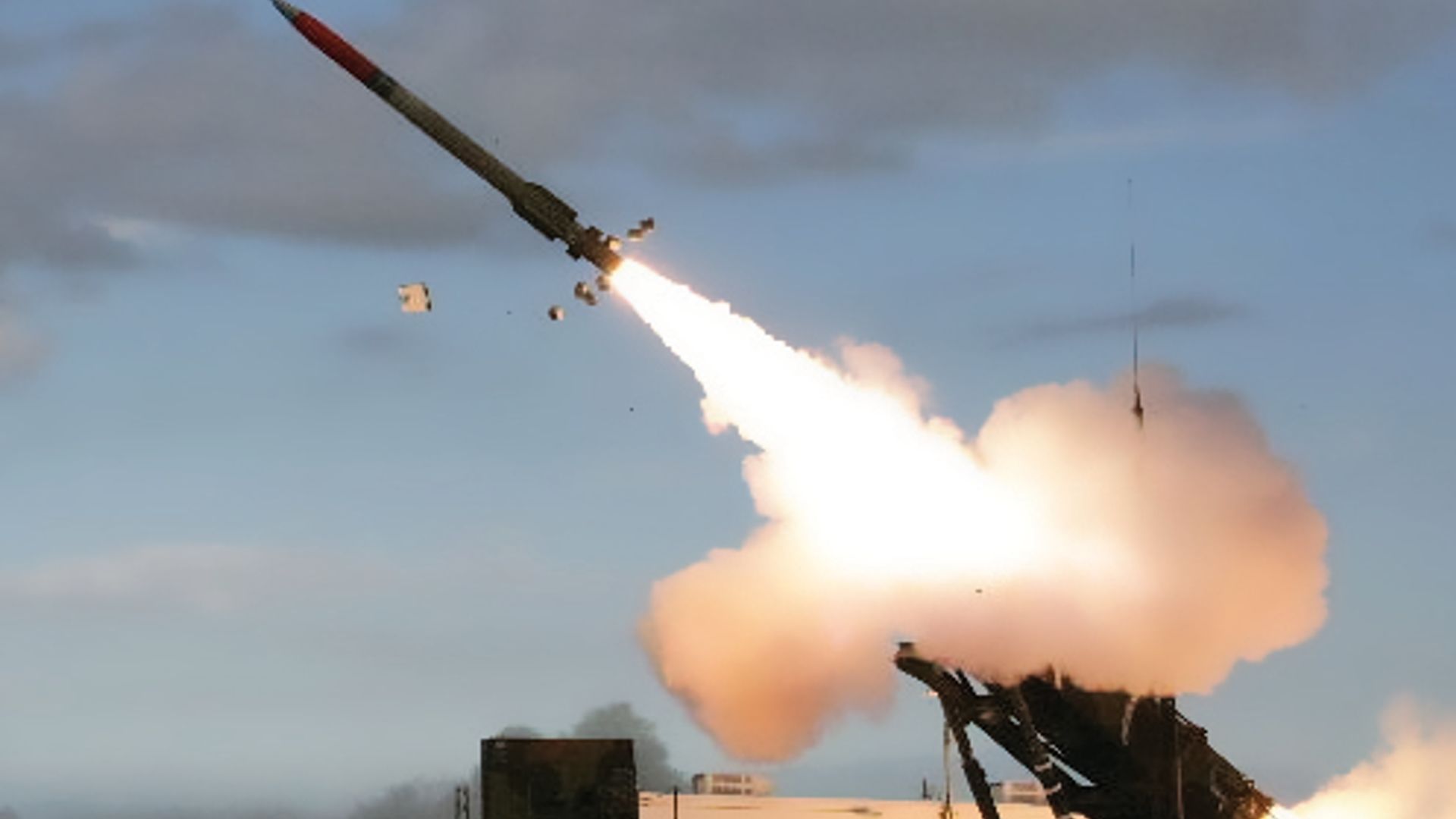
[RYAN ROBERTSON]
ROCKETS. MISSILES. HYPERSONIC GLIDE VEHICLES. MOST MODERN WEAPONS THAT FLY THROUGH THE AIR HAVE ONE THING IN COMMON: THEY’RE FAST. BUT IN RUSSIA, IT’S A SLOW MOVING THREAT THAT’S HAVING AN UNUSUAL HEYDAY. SMALL, PROPELLER PLANES LADEN WITH EXPLOSIVES ARE BEING FLOWN AUTONOMOUSLY TO SENSITIVE SITES DEEP WITHIN RUSSIAN TERRITORY–DAMAGING REFINERIES AND DESTROYING RADAR SITES, AMONG OTHER THINGS.
Landrum: I mean, clearly, this is just one example of the innovation and creativity of Ukraine. And I think, that stems from a nation who sees the next existential threat to their survival. And so they’re using all capabilities
[RYAN ROBERTSON]
LANCE LANDRUM IS A RETIRED AIR FORCE LIEUTENANT GENERAL. HE’S ALSO A SENIOR FELLOW AT THE CENTER FOR EUROPEAN POLICY ANALYSIS.
DURING A RECENT VIRTUAL PRESS CONFERENCE FOCUSING ON THE USE OF DRONES IN UKRAINE, AND THE LESSONS NATO NATIONS CAN TAKE, LANDRUM SAID ONE OF THE BIGGEST IS RECOGNIZING GAPS IN RUSSIA’S AIR DEFENSES AREN’T EXCLUSIVE TO RUSSIA.
Landrum: I think that we should take that to heart and not have hubris that we wouldn’t have the same problems. There’s one thing about these drones of all different sizes, you know, the small, medium and large, that they can exploit gaps and seams in traditional air defense systems in ways that traditional offensive systems haven’t in the past.
[RYAN ROBERTSON]
AND LANDRUM ISN’T ALONE IN HIS ASSESSMENT. GORDON DAVIS, A RETIRED ARMY MAJOR GENERAL AND ANOTHER CEPA SENIOR FELLOW AGREES.
Davis: This issue of low-altitude threats is one shared by all nations, Russia, the West etc. We have yet to really optimize capability to identify low-altitude, slow-moving threats, and then you know, have a integrated network that can respond to those threats rapidly.
[RYAN ROBERTSON]
THE PROBLEM IS MOST MODERN AIR DEFENSES ARE CALIBRATED TO DETECT AND STOP FAST MOVING THREATS, MANY OF WHICH WOULD COME FROM OVER THE HORIZON. SO WHAT’S THE SOLUTION?
WELL, ACCORDING TO LANDRUM AND DAVIS, IF THE UNITED STATES–OR REALLY ANY NATION–WANTS TO DEFEND ITSELF AGAINST SLOW-MOVING DRONE PLANES LOADED WITH EXPLOSIVES IT’S GOING TO TAKE AN INTRICATE AND COMPLEX SYSTEM OF WHAT THE MILITARY CALLS ‘SENSORS AND EFFECTORS.’
THE SENSORS WOULD DETECT THE THREATS AND RELAY THAT DATA TO THE EFFECTORS, WHICH MAY OR MAY NOT BE IN THE SAME LOCATION AS THE SENSOR.
FOR INSTANCE, SOME HIGH-ALTITUDE BALLOONS FLOATING OFF THE COAST OF CALIFORNIA COULD BE CONFIGURED TO DETECT THIS TYPE OF THREAT–
AND THEN TELL THE EFFECTORS TO GO INTO ACTION.
THE EFFECTOR COULD BE KINETIC, LIKE MISSILES OR GUIDED-ARTILLERY SHELLS, OR IT COULD BE NON-KINETIC. WHICH MEANS IT WOULD RELY ON SOME ELECTRONIC WARFARE COUNTERMEASURES TO DEAL WITH THE DRONE.
WHATEVER AN EVENTUAL DEFENSE AGAINST THESE TYPES OF THREATS MAY LOOK LIKE, LANDRUM AND DAVIS SAY IT’S A SYSTEM THAT’S NEEDED NOW, BECAUSE
Davis: No nation has that yet. So that’s a vulnerability at the moment that the Ukrainians are exploiting to their advantage. And of course, they’re restricted by a number of Western policies on weapons systems that they’ve been given to employ, munitions and systems, inside Russian territory, airspace, maritime waters, etc. And so they’re leveraging their domestic capabilities, to good advantage, to strike key infrastructure within Russia. But they’ve got a problem. Russians have a problem that, you know, we share as well. And we would be, we would do well to heed and address this problem.
[RYAN ROBERTSON]
FOR MORE OF OUR UNBIASED, STRAIGHT FACT REPORTING ON THE WAR IN UKRAINE, BE SURE TO DOWNLOAD THE STRAIGHT ARROW NEWS APP TODAY, OR VISIT US AT SAN.COM.
FOR STRAIGHT ARROW NEWS, I’M RYAN ROBERTSON.











